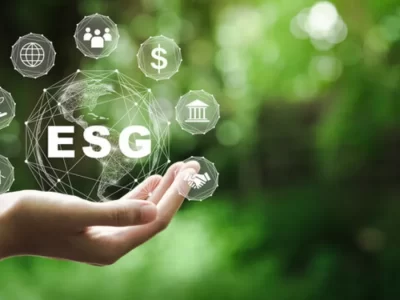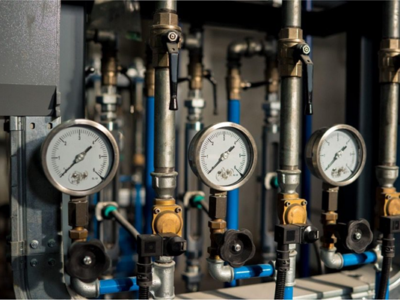In an age where sustainability is not just a trend but a necessity, the concept of an eco-friendly greenhouse becomes increasingly significant. Greenhouses have long been a staple for gardeners looking to extend their growing seasons, but with the growing concern over environmental impact, the traditional greenhouse is getting a green makeover.
In this blog, we will explore some innovative tips and tricks to design a greenhouse that is not just a haven for plants but also a friend to the planet.
Opt for Sustainable Building Materials
The journey to an eco-friendly greenhouse begins with the choice of materials. Traditional plastics and metals can be replaced with sustainable alternatives such as recycled plastic, bamboo, or sustainably harvested wood. Polycarbonate panels, known for their durability and excellent light-transmission qualities, also make a great eco-friendly alternative to glass or conventional plastics.
Vertical Gardening
Space is often at a premium in greenhouses. Incorporating quality hydroponic system techniques can maximize your growing area while minimizing the greenhouse’s footprint. Vertical gardening methods, such as trellises or hanging planters, are not only space-efficient but can also improve air circulation and light exposure to plants.
Harness Natural Energy Sources
Solar Power
Implementing solar panels on your greenhouse not only cuts down on electricity costs but also drastically reduces your carbon footprint. Solar panels can power ventilation systems, heating, lighting, and irrigation, utilizing clean energy directly from the sun.
Geothermal Heating and Cooling
Utilizing the earth’s stable underground temperature is an innovative way to maintain optimal climate conditions in your greenhouse. By circulating water through underground pipes, this system can cool your greenhouse in summer and warm it in the winter, significantly reducing the need for conventional heating and cooling systems.
Water Conservation Techniques
Water is a precious resource in gardening. Installing a rainwater harvesting system can significantly reduce your reliance on municipal water supplies. Coupled with a drip irrigation system, which delivers water directly to the roots of plants, water use can be optimized, ensuring that every drop is utilized efficiently.
Choose Eco-friendly Insulation
Insulation is key to a greenhouse, keeping it warm in the winter and cool in the summer. Choosing eco-friendly insulation materials such as cellulose, cork, or sheep’s wool can greatly enhance your greenhouse’s energy efficiency. These materials are not only renewable but also have the added benefit of being excellent insulators.
Implement Companion Planting
The practice of companion planting can greatly benefit your greenhouse ecosystem. By arranging plants in such a way that they support each other’s growth (e.g., providing shade or repelling pests), you can reduce the need for chemical fertilizers and pesticides, promoting a more natural, self-sustaining environment.
Use Natural Pest Control
Instead of relying on chemical pesticides, opt for natural pest control methods. Introducing beneficial insects like ladybugs or using plant-based insect repellents can help manage pests in an eco-friendly way. Companion planting, as mentioned earlier, can also play a crucial role in natural pest management.
Educate and Inspire
Lastly, an often-overlooked aspect of eco-friendly greenhouse design is its potential to educate and inspire others. By sharing your practices and the benefits of sustainable gardening, you can encourage more individuals to adopt eco-friendly methods, creating a ripple effect that benefits the planet.
Incorporate Smart Technology
Emerging technology can play a significant role in further enhancing the sustainability of your greenhouse. Smart monitoring systems can help you keep a vigilant eye on temperature, sunlight, and moisture levels, and adjust them as needed while minimizing wastage. These systems can also provide critical data that you can analyze to optimally plan your planting and harvesting schedules. Additionally, smart water controllers can automate your irrigation systems, ensuring your plants get the water they need, only when they need it, avoiding over-watering or under-watering.
Embrace Permaculture Principles
Permaculture, a concept that combines the words ‘permanent’ and ‘culture,’ is a design philosophy aimed at creating sustainable and self-sufficient agricultural systems. By incorporating permaculture principles into your greenhouse, such as diversity, resilience, and ecological interconnection, you can create a self-regulating, virtually waste-free greenhouse. For instance, creating a small compost corner in your greenhouse can convert organic waste into rich compost, reducing waste and enriching the soil simultaneously. This harmonious, cyclical approach can turn your greenhouse into an epitome of sustainability.
Conclusion
Designing an eco-friendly greenhouse is not just about reducing your environmental footprint; it’s about creating a space that sustains itself, promotes biodiversity, and serves as a beacon for sustainable living. By incorporating these tips and tricks, you can transform your greenhouse into a testament to the harmony between nature and human ingenuity, proving that we can grow and thrive alongside our environment, not at its expense.








Comments